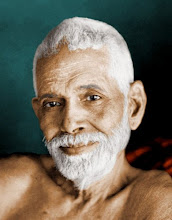In The End of Sorrow: The Bhagavad Gita for Daily Living, Eknath Easwaran begins his commentary on the great Hindu scriptural classic by quoting Mahatma Gandhi:
The Gita is not a historical discourse. A physical illustration is often needed to drive home a spiritual truth. It is the description not of war between cousins, but between two natures in us--the Good and the Evil.
Easwaran agrees with Gandhi and tells the story of how a train on which he was traveling once stopped at Kurukshetra, the field immortalized in the Gita as the site of a devastating battle between the evil Kauravas and the good Pandavas, and most of the passengers disembarked to wander the hallowed field while Easwaran remained on the train because he knew that Kurukshetra was actually a metaphor for the battle against "all that is selfish, self-willed, and separate in us." Easwaran continues:
The violence we see about us is a reflection of the anger and self-will burning deep within us. Most of us carry a conflagration around with us in the depths of consciousness, and many of us are skilled practitioners of guerilla warfare right in our own homes. The war the mystics of all the world's great religions talk about is not the one erupting in the Middle East or in Southeast Asia that makes newspaper headlines; it is the one erupting from the fierce self-will afflicting all of us, estranging individuals, familes, communities, races, and nations. (23-24)
Easwaran argues that we can win this battle and that a careful study of the Gita shows us how with its eightfold path of meditation and allied disciplines that Easwaran has adopted into his own spiritual system that he's spent much of his life sharing with the world.
I read Easwaran and don't know whether to believe him or not. Is the strife and violence we see inside and around us really simply the result of our egoistic selfishness and self-will, and can we really triumph over them by waging a skillful battle against them armed with meditation, mantram, mindfulness, training the senses, slowing down, putting the welfare of others first, reading spiritual literature, and enjoying spiritual companionship?
What's more, are Gandhi and Easwaran correct in arguing that we often need myths to convey truths that expository prose cannot? Isn't the world full of people--like Christian TV evangelists and their followers or the train passengers who wandered the field of Kurukshetra--who take the myths literally and, in so doing, never understand the real point of the myth and never become transformed by its truth?
I don't know the answers to these questions, and I'm tired of reading other people's opinions and speculating. I want to find out for myself. I want to read, reflect, and blog on the Gita and Easwaran's commentary while I follow Easwaran's eight-point program within the wider context of an integral life practice and see where it all leads.
It is said that a journey of a thousand miles begins with a single step. My journey begins here.



2 comments:
Easwaran was either confused, ignorant, lying, or just taking advantage of credulous westerners such as yourself.
Maybe you're right, "Dupree." But I hope, I REALLY hope you're wrong.
Post a Comment